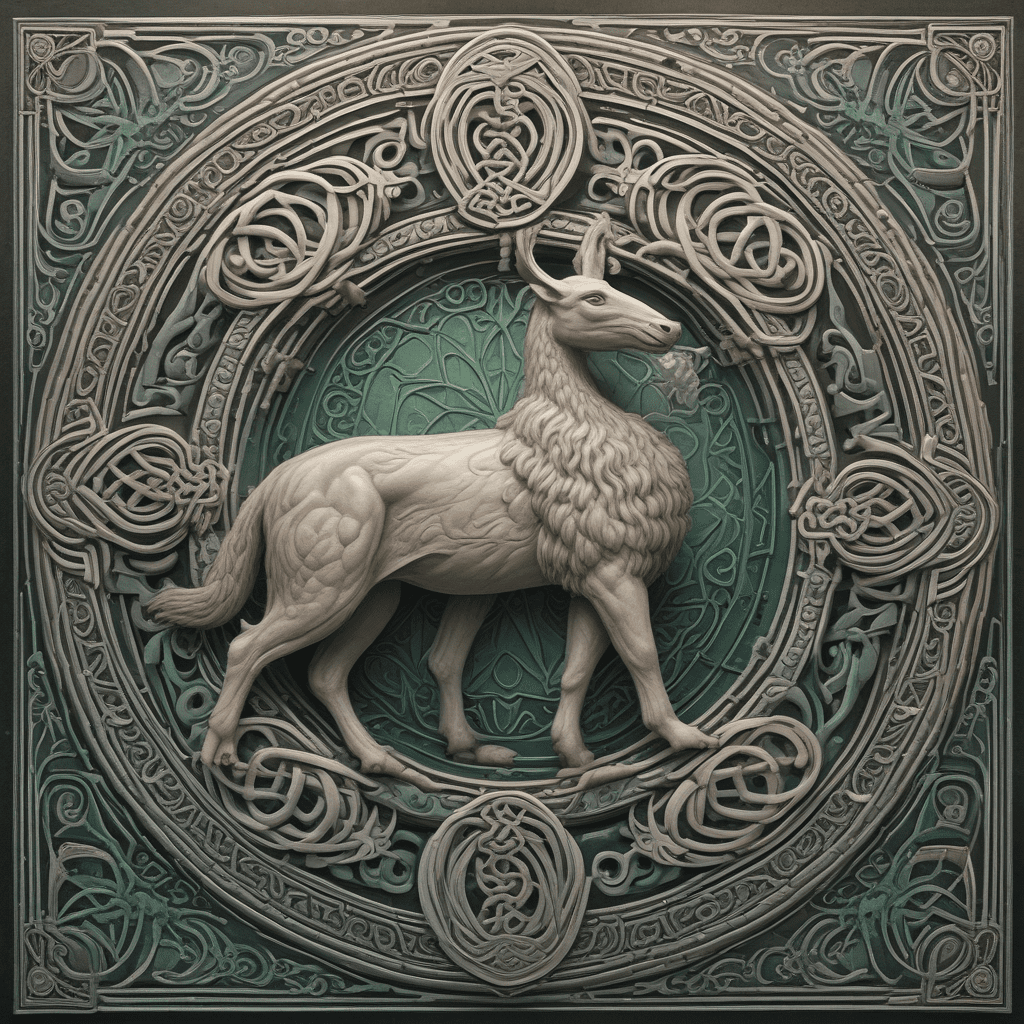Korean Folklore: The Magical Tale of the White Hare
The Legend of the White Hare: A Korean Folktale
In the rich tapestry of Korean folklore, the legend of the White Hare stands as a timeless tale of sacrifice, compassion, and transformation. This captivating myth, woven into the fabric of Korean culture, tells the story of a humble white hare who embarks on a journey of selflessness, leading to its legendary status. The story, passed down through generations, speaks of the hare's unwavering loyalty and the enduring power of kindness. The legend's powerful themes resonate with audiences of all ages, offering timeless lessons about the importance of empathy, courage, and the interconnectedness of all living beings.
The Story’s Origins: Tracing the Roots of the Legend
The origins of the White Hare legend are deeply rooted in Korean history and mythology. While its exact origins remain shrouded in the mists of time, the tale likely emerged from a blend of ancient Korean beliefs, shamanistic traditions, and agricultural practices. The White Hare, often depicted as a pure and benevolent creature, holds a special place in Korean folklore. Its association with the moon, a symbol of purity and enlightenment, further enhances its mystical aura. The legend is often linked to the Joseon Dynasty (1392-1910), a period marked by significant cultural and artistic flourishing. During this era, the story was widely circulated through oral storytelling, folk songs, and artistic representations. The White Hare, with its enduring symbolism, became a prominent figure in Korean art, literature, and traditional rituals.
The White Hare and the Dragon King: A Story of Sacrifice and Redemption
The core of the legend revolves around a white hare who encounters a starving Dragon King. The Dragon King, a powerful mythical creature, rules over the seas and is revered as a guardian of the waters. However, in this particular instance, the Dragon King is in dire straits, suffering from a severe illness that weakens him. The White Hare, driven by a profound sense of compassion, decides to sacrifice itself for the Dragon King's well-being. The hare, despite its small size and limited strength, understands the urgency of the situation and is willing to risk its own life to save the Dragon King.
The White Hare's selfless act touches the Dragon King's heart. Touched by the hare's devotion, the Dragon King is miraculously healed, his strength and power restored. In gratitude, the Dragon King grants the White Hare a powerful blessing. This act of sacrifice and redemption forms the heart of the legend, highlighting the transformative power of compassion and the unexpected rewards that can come from acts of kindness.
The White Hare’s Transformation: Symbolism and Interpretation
The White Hare's transformation, brought about by its selfless act, is a key aspect of the legend. After its sacrifice, the hare is reborn as a supernatural being, often depicted as a celestial creature in the moon. The hare's metamorphosis symbolizes the potential for spiritual growth and enlightenment. It signifies that even the smallest and most humble creatures can achieve extraordinary things when guided by a pure heart. The White Hare's transformation becomes a beacon of hope, reminding individuals that they possess the power to change their destiny through acts of kindness and selflessness.
This transformation holds important lessons about the interconnectivity of all living beings. The White Hare's sacrifice not only benefits the Dragon King but also elevates the hare to a higher plane of existence, reinforcing the concept of karma and the interconnectedness of the natural world. The White Hare's story teaches that our actions have far-reaching consequences and that by acting with compassion, we can create positive ripples that impact the world around us.
Themes of Loyalty and Compassion: The Moral Compass of the Legend
The legend of the White Hare is fundamentally a story about the moral compass of the human spirit. At its core, it emphasizes the virtues of loyalty and compassion. The White Hare's choice to sacrifice itself for the Dragon King, a creature vastly different from itself, highlights the power of selflessness and unwavering loyalty. The story encourages readers to consider their own motivations and actions, to strive for empathy and kindness in their interactions with others.
Moreover, the White Hare's story underscores the importance of compassion, even when confronted with fear or adversity. The hare's courage in the face of danger serves as a powerful reminder that true heroism often lies in the act of extending a helping hand to those in need. The legend encourages individuals to embrace compassion as a guiding principle, recognizing that true strength lies not in power or dominance, but in the willingness to help others, even at personal cost.
The White Hare’s Role in Korean Culture: Impact on Art and Literature
The White Hare's story has profoundly impacted Korean art and literature, symbolizing purity, sacrifice, and transformation. The hare often appears in traditional paintings and sculptures, embodying the moon's gentle radiance and reminding viewers of the hare's celestial connection. These artistic representations showcase the White Hare in a variety of contexts: a peaceful creature amidst flowering blossoms, a graceful figure leaping across moonlit landscapes, or a radiant being illuminating the night sky. These images have become iconic in Korean art, inspiring countless interpretations over the centuries.
Beyond visual art, the White Hare's legend has also enriched Korean literature. The story's enduring appeal is evident in folktales, poems, and even contemporary novels. In these literary works, the White Hare serves as a powerful symbol, embodying themes of hope, selflessness, and the interconnectedness of life. The legend's influence can be seen in how Korean writers explore the power of compassion, the beauty of nature, and the transformative potential within each individual.
The White Hare and the Harvest: A Connection to Agriculture
The White Hare's connection to the moon and its association with the harvest season highlight the story's strong ties to Korean agricultural practices. In traditional Korean culture, the moon was seen as a symbol of abundance and fertility, and the White Hare's lunar association links it to the cycle of harvest and renewal. This connection is further reinforced by the hare's position as a guardian spirit of the fields, ensuring bountiful crops and prosperity for farmers.
The legend's impact on Korean agricultural practices is reflected in various rituals and customs. For instance, farmers would offer sacrifices to the White Hare, seeking its blessings for a prosperous harvest. These rituals, rooted in respect for nature and appreciation for the White Hare's benevolent power, demonstrate the legend's deep connection to Korean rural life. The White Hare's story serves as a reminder of the importance of gratitude for the earth's bounty and the interconnectedness of human beings and the natural world.
The White Hare as a Guardian Spirit: Protective Power and Sacredness
The White Hare's journey from a humble animal to a celestial being reinforces its status as a guardian spirit in Korean mythology. The legend's themes of sacrifice, compassion, and transformation elevate the White Hare to a position of reverence, inspiring awe and respect. This reverence extends to the White Hare's role as a protector, shielding individuals and communities from harm. The hare's association with the moon, a symbol of purity and illumination, further strengthens its image as a protective force, banishing darkness and promoting peace.
In traditional Korean beliefs, the White Hare safeguards homes, families, and entire villages. The hare's presence is seen as a source of protection, blessing those who honor its spirit with good fortune and prosperity. This protective power is often invoked in rituals, where offerings and prayers are made to the White Hare, seeking its guidance and favor. The White Hare's sacredness reflects its enduring influence on Korean spiritual practices, reminding individuals of the importance of respect for nature and the power of benevolent forces.
The White Hare in Modern Korean Society: Contemporary Interpretations
The White Hare's legacy continues to resonate in modern Korean society, inspiring new interpretations and applications. The story's timeless themes of selflessness, transformation, and the interconnectedness of all living beings resonate with contemporary audiences facing complex challenges. The legend serves as a reminder of the importance of empathy, compassion, and courage in the face of adversity.
Modern interpretations of the White Hare's story often explore themes of environmental protection, social justice, and individual empowerment. The White Hare's journey from humble beginnings to a powerful celestial being inspires individuals to believe in their own potential for transformation and to strive for positive change in the world. The story's enduring appeal lies in its ability to inspire hope and remind individuals that even seemingly insignificant actions can have a profound impact on the world around them.
Theories on the Legend’s Purpose: Explanations for its Enduring Appeal
The White Hare's legend continues to captivate audiences across generations, prompting inquiries into its purpose and enduring appeal. Scholars and cultural experts offer various interpretations, exploring the story's potential function as a moral guide, a reflection of societal values, or a vehicle for transmitting cultural knowledge.
One interpretation suggests that the story serves as a moral compass, emphasizing the importance of selflessness, compassion, and loyalty. The White Hare's sacrifice highlights the virtues that Korean society values, encouraging individuals to strive for a higher moral standard. Another theory proposes that the legend reflects the values and beliefs of Korean society, showcasing its reverence for nature, its appreciation for the moon's power, and its belief in the interconnectedness of life.
Further, the story might be seen as a means of transmitting cultural knowledge, passing down traditional beliefs and practices through generations. The White Hare's connection to the moon and the harvest season illustrates the importance of agriculture and the cyclical nature of life. The legend's enduring appeal likely stems from its ability to connect with audiences on multiple levels, offering a timeless moral lesson, reflecting cultural values, and preserving traditional knowledge.
FAQ
Q: Where can I find more information about Korean mythology?
A: You can find more information about Korean mythology in books, articles, and online resources dedicated to Asian folklore. Libraries, museums, and academic institutions often have collections related to Korean mythology.
Q: Are there other Korean folktales with similar themes to the White Hare legend?
A: Yes, there are many other Korean folktales exploring themes of selflessness, transformation, and the interconnectedness of life. Some examples include the story of "The Turtle and the Hare," which highlights the importance of perseverance, and the tale of "The Tiger and the Deer," which emphasizes the power of compassion and forgiveness.
Q: What is the significance of the White Hare's connection to the moon in Korean culture?
A: The moon holds a significant place in Korean culture, symbolizing purity, enlightenment, and spiritual growth. The White Hare's association with the moon reflects its connection to these concepts, making it a symbol of hope, transformation, and the potential for spiritual awakening.
Q: Is the White Hare still a prominent figure in modern Korean culture?
A: While the White Hare is not as prominent as it once was in daily life, its legacy continues to influence Korean art, literature, and cultural practices. The story continues to be told and retold, inspiring new interpretations and applications in contemporary society.
Q: How can understanding Korean mythology benefit us?
A: Understanding Korean mythology offers insights into Korean cultural values, beliefs, and history. It helps us appreciate the diversity of human stories and the enduring power of myth and legend to inspire, teach, and connect us across cultures and generations.



